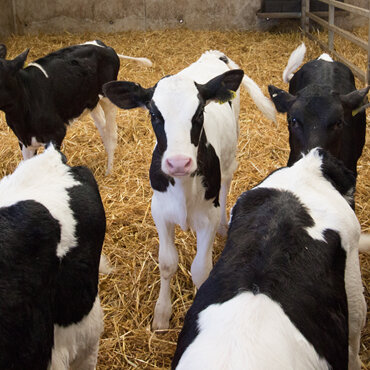Franklin Vets
Franklin Vets - excellence in veterinary care for dairy, farming, lifestyle, equine and household pets. BESTPRACTICE ACCREDITED NZ.
Your account is powered by Storbie. To edit your profile visit my.storbie.com
Your account is powered by Storbie. To edit your profile visit my.storbie.com

BVD research indicates that 80% of herds and 60% of all cows in New Zealand have been exposed to BVD at some point, with the financial impact on the cattle industry conservatively estimated at $150-200 million annually.
After collating our own clients BVD Bulk Milk monitoring results, we know that over half of all our dairy herds have had recent BVD exposure at levels which make producing Persistently Infected (PI) animals a real possibility. Often these PI animals are never found, as they die or are culled prior to making their way into the milking herd. Sadly, this means there has been wasted resources rearing an animal we don’t end up milking but more importantly, these animals have a significant impact on your business before they go. Researchers place the cost of an active BVD infection (PI animals in the herd) as high as $87 per head per year; the cost of BVD can be staggering!
BVD control pivots on the prevention of BVD Persistently Infected (PI) animals entering your herd. If you aren’t vaccinating your herd against BVD the only option is testing all the keeper calves and culling any PI animals at the earliest possible stage. Thanks to a recent development in BVD testing we now have a quick, accurate and affordable option to screen your calves for BVD carriers at any age. The new BVD tests allows calves to be tested as early as practical, even at the time of birth! Previous ear notch test required calves to be at least 35 days old.
Thanks to a recent development in BVD testing we now have a quick, accurate and affordable option to screen your calves for BVD carriers at any age. The new BVD tests allows calves to be tested as early as practical, even at the time of birth! Previous ear notch test required calves to be at least 35 days old.
For many farms, the most practical timing for this will be while the calves are sedated for debudding. By testing our calves between 2-6 weeks old the spread of the virus will be limited and the opportunity to affect the season’s mating performance will be eliminated.
If you are ready to take the step from monitoring BVD to controlling BVD talk to us about screening your calves.
Dr Dan Fitzharris BVSc
Franklin Vets - excellence in veterinary care for dairy, farming, lifestyle, equine and household pets. BESTPRACTICE ACCREDITED NZ.



